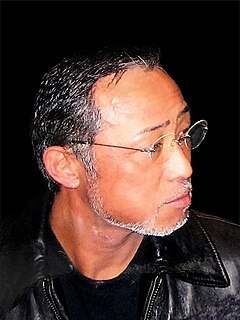 W
WHikoshirō Sadamune also called Sōshū Sadamune was a swordsmith of the Sōshū school, originally from Gōshū whose works are considered some of the finest blades ever created. His works are often compared with those of the other great Koto era (987-1596) swordsmiths including Sōshū Masamune, Toshiro Yoshimitsu, Go Yoshihiro, Bizen Nagamitsu, and Ike Muramasa. He was a son by blood or adoption of Sōshū Masamune considered by many to be the most famous of the Sōshū masters.
 W
WHoriyasu is a Japanese tattooist, specializing in Irezumi. He is one of the most respected contemporary tattooists in Japan.
 W
WKanenobu [兼信, 兼延, 兼言] is the name of both a Japanese swordsmith and his clan, a group that is famous for producing samurai swords, katana, wakizashi and, occasionally, spears in the style of the Mino School - Tōkaidō. The history of the family covers a period of more than 600 years. SHIZU KANEUJI was the founder in Mino and was a student of Masamune.
 W
WMasamune (正宗), also known as Gorō Nyūdō Masamune , was a medieval Japanese blacksmith who is widely recognized as Japan's greatest swordsmith. He created swords and daggers, known in Japanese as tachi and tantō respectively, in the Sōshū school. However, many of his forged tachi were made into katana by cutting the tang (nakago) in later times. For this reason, his only existing works are katana and tantō. No exact dates are known for Masamune's life. It is generally agreed that he made most of his swords between 1288 and 1328. Some stories list his family name as Okazaki, but some experts believe this is a fabrication to enhance the standing of the Tokugawa family.
 W
WNagasone Kotetsu was a Japanese swordmaker of the early Edo period. His father was an armorer who served Ishida Mitsunari, the lord of Sawayama. However, as Ishida was defeated by Tokugawa Ieyasu at the Battle of Sekigahara, the Nagasone family and some other craftsmen from Sawayama went to Echizen Province, where they took refuge in Fukui City.
 W
WEtchū Norishige (1290-1366) (則重) was a Japanese swordsmith of the late Kamakura period. He was a contemporary and possibly a pupil of Masamune. His swords are noted for their distinct matsukawa hada 松皮肌 . One of his works is classified as Kokuho by the Ministry of Culture, the highest classification for a sword.
 W
WShintōgo Kunimitsu (新藤五国光) was a Japanese swordsmith and was especially famous for making Tantō. He is the founder of the Soshu-den tradition. Usually he used suguha Hamon. The oldest date of his work is 1293. He was active during the Einin, Shōwa and Enkyō periods, generally acknowledged to be the teacher of master swordsmiths Masamune, Yukiimitsu and Norishige. This is due to various similarities in style and workmanship that indicate that Masamune was almost certainly his student.
 W
WJapanese swordsmithing is the labour-intensive bladesmithing process developed in Japan for forging traditionally made bladed weapons (nihonto) including katana, wakizashi, tantō, yari, naginata, nagamaki, tachi, nodachi, ōdachi, kodachi, and ya (arrow).